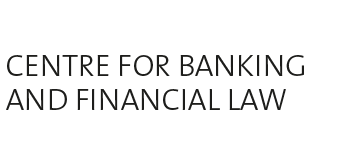Collective investment schemes
AMAS sustainability guidelines

Yannick Caballero Cuevas
(Translated by DeepL)
The Asset Management Association Switzerland (AMAS) has published a voluntary sustainability self-regulation aimed at improving the framework conditions for the creation and management of sustainable collective investment schemes (CIS). This self-regulation will come into force on September 30, 2023, and will impose binding guidelines for financial institutions – members of AMAS – that produce and manage PCCs in relation to sustainability. AMAS thus complements the Swiss Bankers Association’s self-regulation of sustainability criteria in customer advice (commented in cdbf.ch/1241).
For the circular to be applicable, the management, collective asset management or creation of PCCs must refer to sustainability. Art. 3 of the circular specifies that a link with sustainability exists when an investment is described or positioned as sustainable with reference to ESG aspects. An appendix defines the different investment approaches that refer to sustainability. These include exclusion, best-in-class or positive screening, impact investing and stewardship. It is interesting to note that there is no sufficient link to sustainability when only certain aspects of sustainability are mentioned, such as the exclusion or integration of ESG criteria. This type of approach must therefore be combined with another approach listed in the appendix, for there to be a sufficient link with sustainability.
Articles 4 to 5 of the Circular regulate the personal, territorial and material scope of self-regulation.
The circular lays down a number of principles that apply equally to collective asset managers and PCC producers. In this commentary, we will focus on the sustainability obligations for producers, respectively the articles concerning sustainability policy (art. 25), clarifications (art. 26), advertising (art. 28) and reporting (art. 29). Similar obligations apply to collective asset managers.
According to art. 25 para. 1 of the circular, the basis of the sustainability policy must be defined by the producer in the company contract and/or prospectus of each collective investment scheme. These documents must mention the sustainable approaches – as defined in the appendix – that have been implemented. The circular provides for a “comply or explain” principle, should the producer deviate from the definitions set out in the appendix. In addition, the partnership agreement must define the minimum thresholds for investments that must comply with the sustainability requirements set out in the investment policy and be managed in accordance with the sustainability policy. The proportion of investments that do not comply with the investment policy must also be detailed and explained. In addition, the information contained in the prospectus and partnership agreement must be stated clearly and comprehensibly, and include the information required for an investment decision. Another interesting point in this circular is the requirement for transparency regarding the external sources used to manage sustainability aspects. The main sources must be listed in the company’s contract or prospectus, if they come from professional data providers. Given the stakes involved in sustainability data, this concern for transparency is welcome.
Art. 26 of the Circular provides for certain clarifications when, for example, mention is made of an approach based on stewardship, or climate awareness, or pursuing an “impact” strategy. If exclusionary practices are applied in conjunction with other sustainable approaches, the exclusion criteria must be published in the prospectus.
The circular also regulates the issue of PCC advertising that refers to sustainability. Art. 28 of the circular stipulates that the producer – when advertising sustainability-related PCCs in his own name – is obliged to check that the advertising does not contradict the information contained in the legal documents. This article echoes art. 68 LSFin, respectively its paragraph 3, and aims to reinforce prevention against the practice of greenwashing (cf. cdbf.ch/1205).
Art. 29 of the circular lays down an obligation for producers and third parties – such as asset managers – to inform investors about the sustainable approaches relevant to the positioning used by a PCC. This information is provided in the form of an annual sustainability report. In particular, this report describes the applicable sustainable approaches, comparing the CCP’s ratings, indicators or other relevant information with benchmark data, where relevant. In addition, the report should communicate the extent to which the PCC has achieved its sustainability objectives, if it is targeting a specific sustainability impact. If this obligation is delegated to the asset manager, the latter must periodically confirm to the producer that a report complying with the requirements is being made available to investors. In our view, it would be good practice for the sustainability report to be sent to the producer.
With the explosion in the number of PCCs referring to sustainability, this self-regulation is a welcome step towards providing a framework for the management and creation of PCCs. The question remains as to whether free self-regulation is sufficient, or whether legislative proposals will be necessary in the future, particularly to combat greenwashing. The extraterritorial scope of (future) European and American regulations will play a role in determining the answer.




